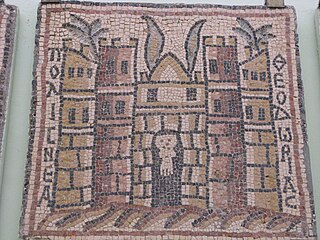Related Research Articles

Tulipa turkestanica, the Turkestan tulip, is a species of tulip native to central Asia. It was first described by Eduard August von Regel in 1873 as a variety of T. sylvestris, then elevated to full species status two years later.

The Field Elm cultivar Ulmus minor 'Umbraculifera' [:shade-giving] was originally cultivated in Iran, where it was widely planted as an ornamental and occasionally grew to a great size, being known there as 'Nalband' Persian: نعلبند [:the tree of the farriers]. Litvinov considered it a cultivar of a wild elm with a dense crown that he called U. densa, from the mountains of Turkestan, Ferghana, and Aksu. Non-rounded forms of 'Umbraculifera' are also found in Isfahan Province, Iran. Zielińksi in Flora Iranica considered it an U. minor cultivar.

The Siberian elm cultivar Ulmus pumila 'Pinnato-ramosa' was raised by Georg Dieck, as Ulmus pinnato-ramosa, at the National Arboretum, Zöschen, Germany, from seed collected for him circa 1890 in the Ili valley, Turkestan by the lawyer and amateur naturalist Vladislav E. Niedzwiecki while in exile there. Litvinov (1908) treated it as a variety of Siberian elm, U. pumilavar.arborea but this taxon was ultimately rejected by Green, who sank the tree as a cultivar: "in modern terms, it does not warrant recognition at this rank but is a variant of U. pumila maintained and known only in cultivation, and therefore best treated as a cultivar". Herbarium specimens confirm that trees in cultivation in the 20th century as U. pumilaL. var. arboreaLitv. were no different from 'Pinnato-ramosa'.

Olbia or Theodorias was a Roman / Byzantine town between Marj and Bayda in the Cyrenaica region of modern Libya. Olbia is now mostly the archaeological site. The location's modern name is Qasr Libya, after the Islamic period castle (Qasr) on the site and Libya or Lebia as a corruption of the ancient name Olbia.
Proraphidia is a genus of snakefly in the extinct family Mesoraphidiidae. The genus currently contains three species; Proraphidia gomezi from the La Pedrera de Rúbies Formation in Spain, Proraphidia hopkinsi from the Weald Clay in England, and the type species Proraphidia turkestanica from Kazakhstan. The genus was first described by O. M. Martynova in 1941 with the publication of P. turkestanica from Jurassic deposits of the Karabastau Formation in Karatau, Kazakhstan.

Lebia is a genus of predatory ground beetles. Common names include colorful foliage ground beetles and flat ground beetles. They are found worldwide and there over 700 species in 17 subgenera.

Lebia grandis is a ground beetle in the family Carabidae found in North America. It is a specialist predator on the eggs and larvae of Colorado potato beetles, and its larvae are obligate parasitoids of Colorado potato beetle pupae.

Lebia marginata is a species of ground beetles in the Harpalinae subfamily that can be found in Austria, Belgium, Bulgaria, Czech Republic, Germany, Great Britain, Hungary, Italy, Liechtenstein, Luxembourg, Poland, Romania, Slovakia, Switzerland, Ukraine, Yugoslavian states, everywhere in Western Europe, and southern part of Russia.
The elm cultivar Ulmus 'Turkestanica' was first described by Regel as U. turkestanica in Dieck, Hauptcat. Baumschul. Zöschen (1883) and in Gartenflora (1884). Regel himself stressed that "U. turkestanica was only a preliminary name given by me; I regard this as a form of U. suberosa" [:U. minor ]. Litvinov considered U. turkestanicaRegel a variety of his U. densa, adding that its fruits were "like those of U. foliaceaGilibert" [:U. minor].

Lebia lobulata is a species of ground beetle in the family Carabidae. It is found in North America.
Lebia arizonica is a species of ground beetle in the family Carabidae. It is found in North America.

Lebia tricolor is a species of ground beetle in the family Carabidae. It is found in North America.

Lebia viridipennis, the green-winged lebia, is a species of ground beetle in the family Carabidae. It is found in North America.
Lebia tuckeri is a species of ground beetle in the family Carabidae. It is found in North America.

Lebia vittata is a species of ground beetle in the family Carabidae. It is found in North America.
Lebia marginicollis is a species of ground beetle in the family Carabidae. It is found in North America.
Lebia miranda is a species of ground beetle in the family Carabidae. It is found in North America.
Lebia cyanipennis is a species of ground beetle in the family Carabidae. It is found in North America.
Crataegus turkestanica, the Turkestan hawthorn, is a species of hawthorn found in Central Asia, Afghanistan and Iran. They are typically found in association with Juglans regia. Some authorities have it as a synonym of Crataegus pseudoheterophylla subsp. turkestanica.

Ajuga turkestanica is a herbaceous flowering plant native to Central Asia. It was first described in 1894.
References
- ↑ "Lebia turkestanica Jedlicka, 1966". 2.6.2. Fauna Europaea. August 29, 2013. Archived from the original on February 5, 2015. Retrieved December 3, 2014.